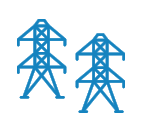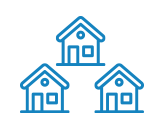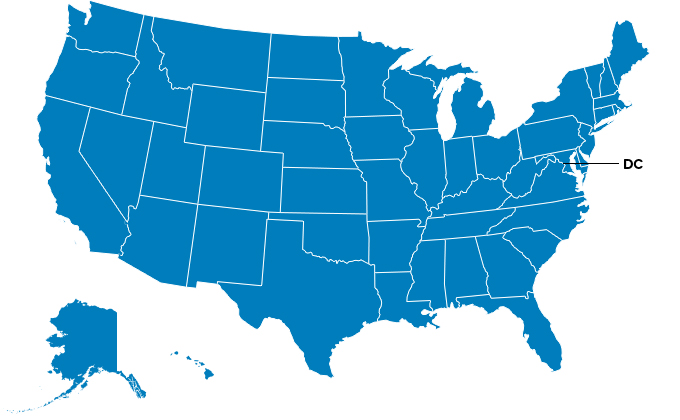Tampa Electric
October 13, 2024
The site navigation utilizes arrow, enter, escape, and space bar key commands. Left and right arrows move across top level links and expand / close menus in sub levels. Up and Down arrows will open main level menus and toggle through sub tier links. Enter and space open menus and escape closes them as well. Tab will move on to the next part of the site rather than go through menu items.
October 14, 2024
3 p.m. EDT
Hurricane Milton barreled across the Florida peninsula last week as a strong Category 3 storm, nearly two weeks after Hurricane Helene caused catastrophic damage across Florida and much of the southeastern United States. Milton caused dangerous storm surge, severe winds, heavy rain, significant inland flooding, and at least 38 confirmed tornadoes.
Numbers to Know
On Friday afternoon, President Joe Biden discussed the ongoing power restoration and response efforts, highlighting the size of the workforce dedicated to the Milton response and the important resilience investments made by electric companies in Florida that have enabled crews to accelerate customer restoration where it is safe to do so.
President Biden also emphasized the ongoing industry-government coordination through the CEO-led Electricity Subsector Coordinating Council (ESCC) to ensure unity of effort at the highest levels of government and across all segments of the industry. He and other top government officials joined the ESCC call on Friday to meet with impacted electric company CEOs and industry executives to receive an update on the damage assessment and restoration progress and to ensure an effective and efficient response. This was the ESCC’s eighth call since Helene gained hurricane strength in the Gulf of Mexico.
Every electric company has a detailed plan for restoring power after storms. Companies impacted by Milton are working around the clock to restore power safely and as quickly as possible, when and where conditions allow. In some cases, power restoration could require rebuilding energy infrastructure. You can learn more about this step-by-step process here.
Our thoughts are with those who were impacted by Milton and with those still impacted by Helene. We know that being without electricity creates hardships and is frustrating during ordinary times. We ask for, and greatly appreciate, our customers’ patience and understanding following these extraordinary storms.
Customers impacted by Milton are reminded to:
*It is important to remember that outages measure customer meters impacted, not the number of individuals without power. Due to the nature of the storm, customers may have experienced more than one outage.
The electric power industry remains focused on the rebuild and recovery efforts following Hurricane Helene, which left nearly 6 million customers* in 10 states without power. Crews continue to work day and night to rebuild energy infrastructure and to restore power to those who are able to receive it in the areas of Georgia and the Carolinas hardest hit by the storm.
As of 3 p.m. EDT, power has been restored to approximately 5.96 million customers—or 99.40 percent of those impacted by Hurricane Helene.

Every electric company has a detailed plan for restoring power after storms. Typically, one of the first steps is to make sure that power is no longer flowing through downed lines. Restoration then proceeds based on established priorities. Below are the steps to restore power after a storm. Learn More.












October 13, 2024
October 13, 2024
October 13, 2024
October 13, 2024
October 13, 2024
October 13, 2024
October 13, 2024
October 13, 2024
October 13, 2024
October 12, 2024
October 12, 2024
October 12, 2024
October 12, 2024
October 12, 2024
October 12, 2024
October 12, 2024
October 12, 2024
October 12, 2024
October 12, 2024
October 12, 2024
October 11, 2024
October 11, 2024
October 11, 2024
October 11, 2024
October 11, 2024
October 11, 2024
October 11, 2024
October 11, 2024
October 11, 2024
October 11, 2024
October 11, 2024
October 11, 2024
October 11, 2024
October 11, 2024
October 10, 2024
October 10, 2024
October 10, 2024
October 10, 2024
October 10, 2024
October 10, 2024
October 10, 2024
October 10, 2024
October 10, 2024
October 10, 2024
October 10, 2024
October 10, 2024
October 10, 2024
October 10, 2024
October 10, 2024
October 10, 2024
October 10, 2024
October 10, 2024
October 10, 2024
October 10, 2024
October 10, 2024
October 10, 2024
October 10, 2024
October 09, 2024
October 09, 2024
October 09, 2024
October 09, 2024
October 09, 2024
October 09, 2024
October 09, 2024
October 09, 2024
October 09, 2024
October 09, 2024
October 08, 2024
October 08, 2024
October 08, 2024
October 08, 2024
October 08, 2024
October 08, 2024
October 08, 2024
October 08, 2024
October 08, 2024
October 08, 2024

Additional Information
Data includes information submitted by investor-owned electric companies only. Additional information for public power utilities and electric cooperatives can be found by visiting the American Public Power Association and the National Rural Electric Cooperative Association.